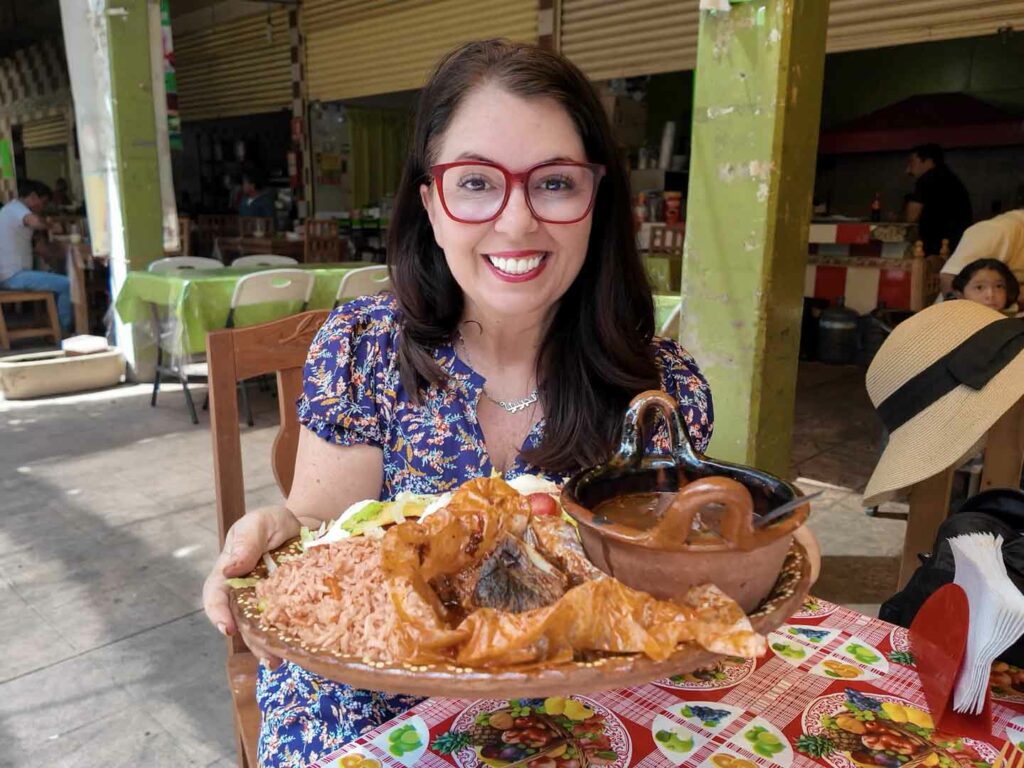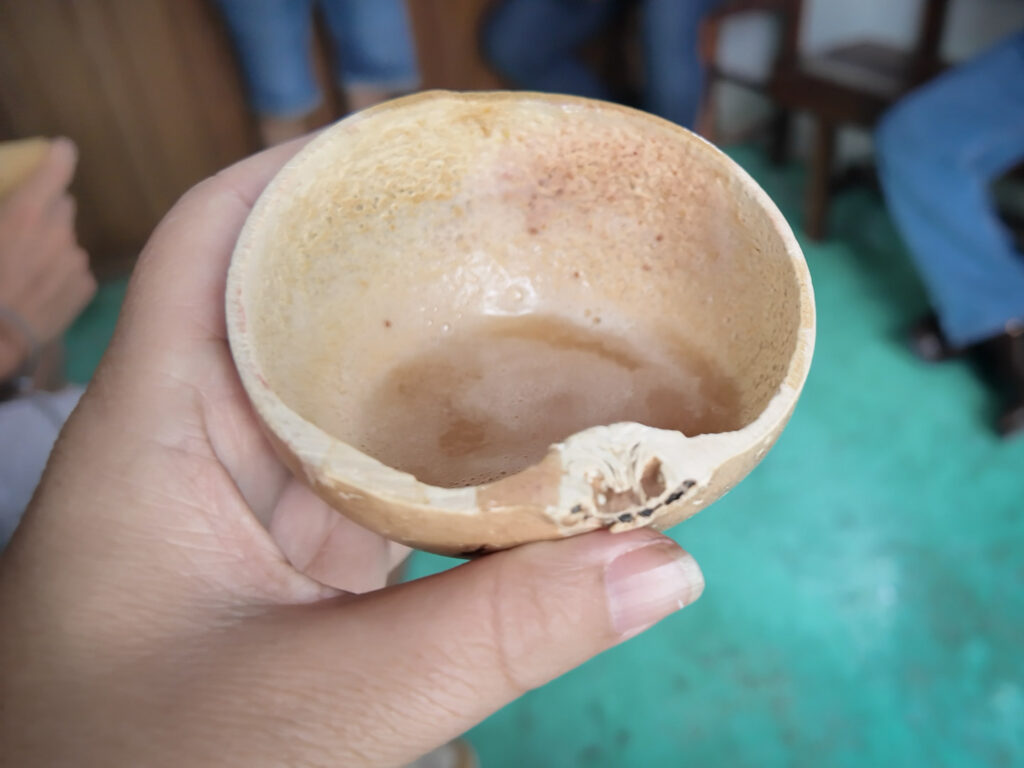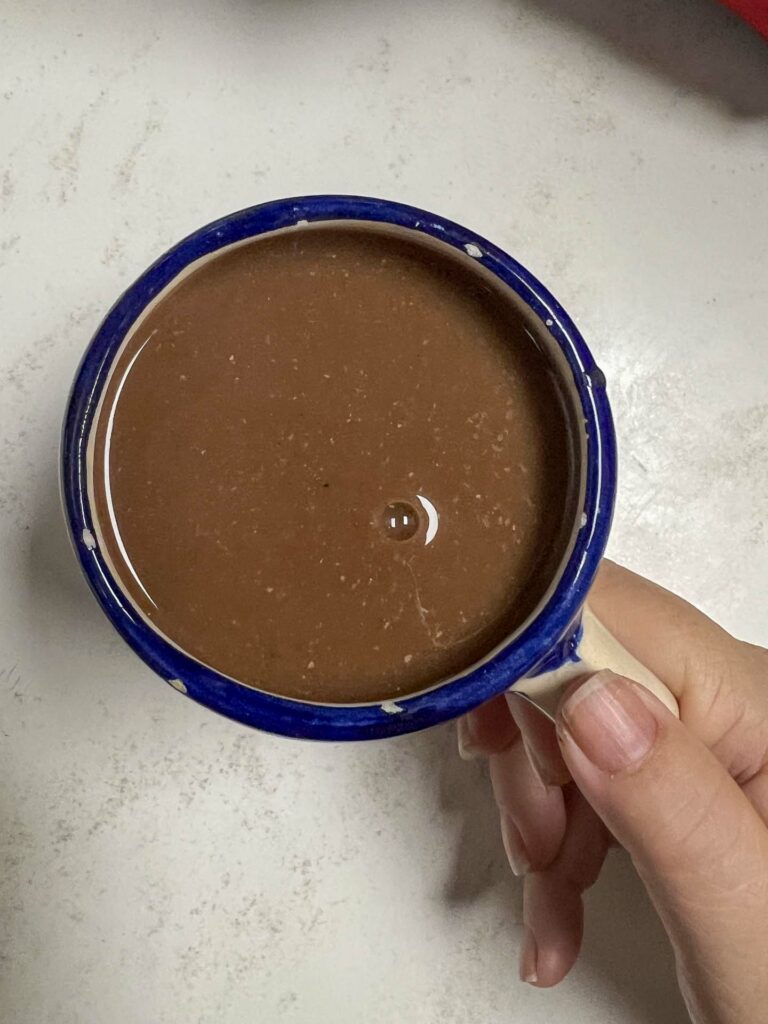Mexicans joke that this city does not exist, but Tlaxcala food is so good you don’t want to miss it.
You know how Puebla gets all the food fame? Well, here’s a secret many Poblanos will tell you. They hop on a bus to Tlaxcala when they want the really traditional stuff.
Tlaxcala is a small city under an hour away from Puebla. It is the capital of the smallest state in Mexico and the source of many jokes in Mexico as people say it is a legend and doesn’t actually exist.
I hadn’t heard of it until I asked people in Puebla where to drink the best pulque and eat other dishes. Poblanos love it for keeping ancient recipes, family traditions and pulque that flows like water.
The best part about Tlaxcala is that it hasn’t changed much over the decades. While Puebla adapts its food for tourists, Tlaxcala keeps serving what locals have always eaten.
Traditional Tlaxcala Foods You Must Try
It may be a small city but it keeps its traditions. This is where Tlaxcala really shines, and why Poblanos make special trips here just for the food. These dishes represent centuries of tradition, with many recipes that haven’t changed since colonial times.
The ingredients come from local farms and the cooking techniques pass from generation to generation without much modification.
.Mixiotes de Borrego
This was the one dish I really wanted to try in Tlaxcala because it is steamed in the thin layer of the agave leaf membrane, also called maguey locally. Some people describe as skin of the leaf. It almost looks like a parchment paper.
Lamb wrapped in maguey leaves creates pure magic in your mouth. The meat steams inside these natural packets for hours, and the agave leaves give an earthy flavor you won’t find anywhere else.
Local families still prepare these using clay pits lined with volcanic stones, and the cooking method dates back to pre-Hispanic times.
The maguey leaves work like nature’s perfect steamer, keeping the meat moist while adding that distinctive agave flavor. It’s one of those dishes that connects you directly to Mexico’s Indigenous roots.
The lamb becomes incredibly tender and almost falls apart when you touch it. Vendors serve these with fresh tortillas alongside salsas and sides.
In the video above I share where I ate it at the Mercado Emilio Sánchez Piedra. As I walked around trying to find it I kept forgetting the name of lamb in Spanish so I kept calling it the mixiote of the animal that says baaaa.
I found it and we had an amazing lunch.
Food in Mexico: 30 Dishes to Try
Tlaxcalteca Tamales
Corn husks wrap these perfect packages of masa and filling, and local versions use ingredients from nearby farms.
Traditional fillings include local meats or seasonal vegetables, and the masa tastes slightly different from other regions because of the corn varieties grown here.
Street vendors sell these hot from portable steamers, making them perfect for breakfast.
The corn husks add a subtle flavor that you don’t get with banana leaf tamales. Each region of Mexico has its own tamal style, and Tlaxcala’s version strikes a perfect balance between hearty and light.
.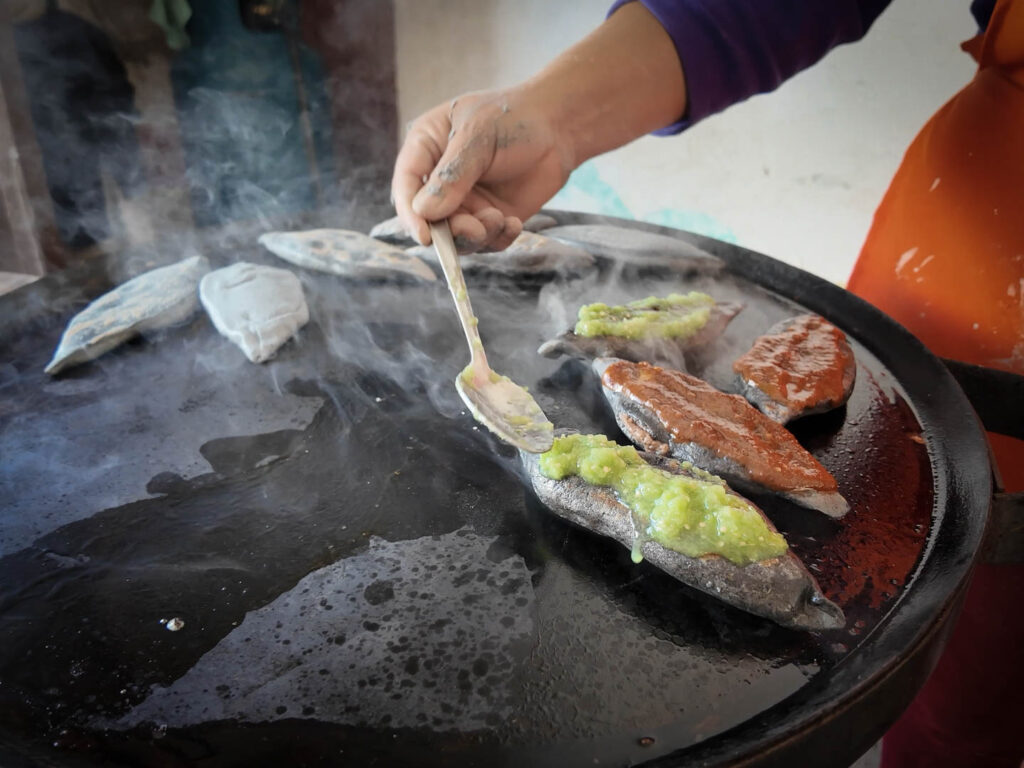
Tlacoyos
This was the second dish I really wanted to try. Tlaxcala means the place of corn tortillas. They are known to have amazing blue corn as well. The blue corn grows in the highlands around Tlaxcala and has more nutrients than regular corn.
They are commonly eaten for breakfast but when we arrived at 11am I was worried I missed them.
But I asked a tamales street vendor if it was still possible and he gave me rough directions to a local spot in a family garage where locals buy fresh tortillas.
It had no name so we just wandered down 20 de noviembre street looking for tortillas and sure enough found a woman making them from scratch. There is no sign but it’s at #4 , 20th de Noviembre. Everyone knows them so if you can’t find it ask for the tortilleria.
Honestly I felt a bit hesitant to ask of they make tlacoyos as well but they welcomed us in, pulled out some plastic stools and told us it was fine to shoot video of them making it.
Mexican hospitality is really so wonderful.
Blue corn masa forms the base of these thick oval patties. They almost look like small boats stuffed with beans, cheese or fava beans before grilling.
The blue corn adds a nutty flavor and vendors top finished tlacoyos with nopales, onions salsa and crumbled cheese.
Indigenous women have made these for hundreds of years, and the recipe passes from mother to daughter basically unchanged.
Mexican Antojitos
Mole Prieto
This dark mole belongs only to Tlaxcala and differs from Puebla’s famous version in important ways. Local chiles create the deep color, and cooks add chocolate and spices in proportions that families keep secret.
The sauce takes days to prepare properly, with multiple generations of chile grinding and spice blending techniques.
Restaurants serve it over chicken or pork, and the meat disappears under this complex, rich sauce that tastes like liquid history. Each family has their own variation, but the basic technique stays the same.
The mole has a deeper, earthier flavor than Puebla’s version, with less sweetness and more chile complexity.
I did not eat this Tlaxcala food in the city as I was so full. But back in Puebla a woman served it for a special lunch. I was so worried because mole poblano is too sweet for me, but this was delicious.
Later she told me this dish was recognized in 2016 for its cultural heritage. It honors the goddess Toci, the deity of textiles and health. And while I ate it with chicken, the pre-Hispanic version used turkey or deer.
.Tacos de Canasta
This food in Tlaxcala literally means basket tacos. And while you can get it in other areas of Mexico it originated here.
Tacos are filled with beans, potatoes, chorizo or beef and then steamed and vendors sell them from a basket.
They are very simple but tasty. Depending on where you go each taco is 5-8 pesos so people often buy several.
I ate them first at a taco stand that was very busy and had a selection of sauces and then later from 3 boys who were walking the basket around in a cart. They were so polite it was hard not to choose them as a quick snack.
.Pulque
Although pulque isn’t originally from Tlaxcala it has become one of the most important producers.
Fresh agave (maguey) sap ferments into this traditional drink that tastes like nothing else in the world.
Natural pulque has a slightly sour tang, and some people say it tastes like thick, alcoholic coconut water. I would agree but it also has a kick similar to kombucha.
Personally I like it natural but you can also find curados, which combine pulque with fruit. These flavored versions include pineapple, strawberry or celery, and the fruit cuts the tartness nicely.
Tlaxcala produces some of Mexico’s finest pulque because the agave grows in perfect soil conditions here. The drink has been part of Indigenous culture for thousands of years, and it’s experiencing a revival as young Mexicans rediscover traditional foods.
Muéganos
These crunchy fritters come tied in small bundles with string, and vendors stack them high in market stalls.
Hot oil creates the crispy exterior while sweet syrup coating makes them irresistible. Kids love these treats after school, and adults buy them to share with coffee or hot chocolate.
The name comes from the way they’re bundled together, like tiny logs tied for burning. Making them requires perfect timing as too long in the oil and they become tough, not long enough and they don’t get crispy.
.Atole and Champurrado
Warm corn drinks comfort you on cool mornings, atole is the base using masa or corn flour. But I prefer champurrado, which adds chocolate to the mix and becomes rich and thick like a hearty hot chocolate.
Vendors serve these from large pots and steam rises like incense in the morning air.
Indigenous people drank versions of these drinks long before Spanish invaded, and the recipes adapted but never disappeared.
The corn base provides sustenance while the warmth helps you start the day right. It’s common to eat tamales or bread with it.
Mixiotes de Pollo
Chicken versions of the classic mixiote offer lighter flavor that’s perfect if lamb feels too heavy. The maguey leaves still provide that distinctive earthy taste, and chicken cooks faster but stays just as tender.
Mexican Drinks
Capirotada
Traditional bread pudding shows up in bakeries and markets throughout the city, dense and sweet like Mexican French toast.
Layers of bread soak up syrup flavored with cinnamon and piloncillo, and some versions add cheese or nuts for extra richness. This dessert connects to Lenten traditions, and families make large batches during Holy Week.
.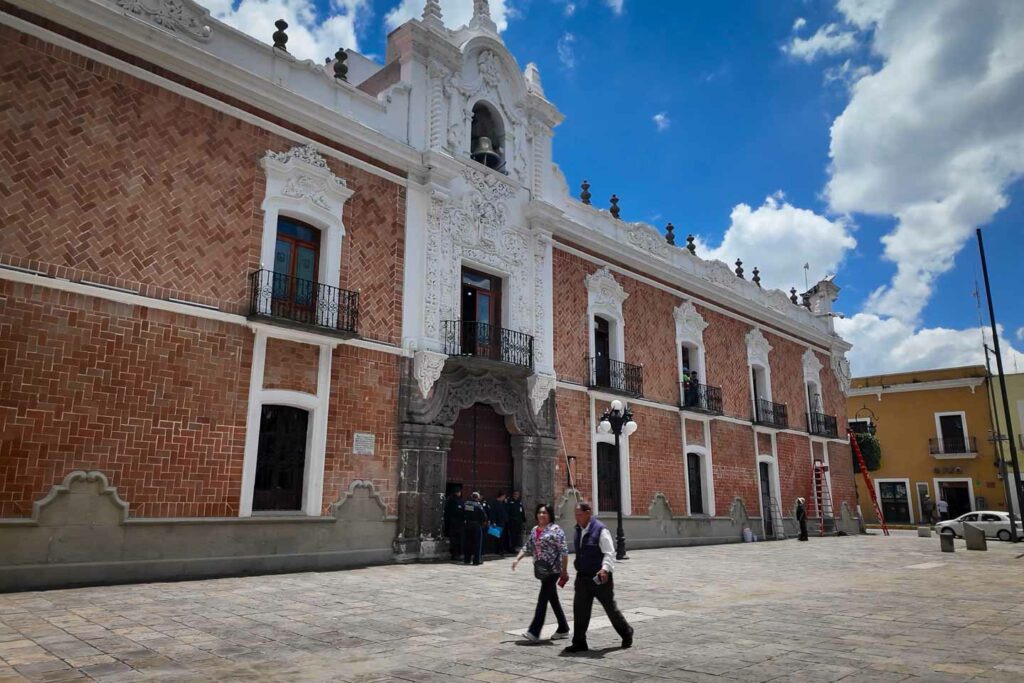
What to do Between Meals
Palacio de Gobierno
This government building holds some of Mexico’s most important murals, painted by Desiderio Hernández Xochitiotzin.
These walls share Tlaxcala’s story of how Tlaxcalans allied with Cortés against the Aztecs. Because of this many Mexicans joke that they are traitors. It’s a fascinating piece of history that most people don’t know much about.
Entry costs nothing, and the building opens Monday through Friday during business hours. Even if you’re not usually into art or history, these murals tell such a compelling story that they’re worth the visit.
Plaza de la Constitución
This center Colonial buildings surround the plaza on all sides, with the cathedral sitting on one corner and government buildings and shops filling the others. It’s the perfect place to get your bearings and start exploring.
Street vendors set up shop around the edges of the plaza, and this is where you’ll find your first taste of local snacks. Grab a coffee from one of the small cafes and spend some time people-watching.
The plaza comes alive in the early evening when families come out to stroll and kids play in the open spaces.
.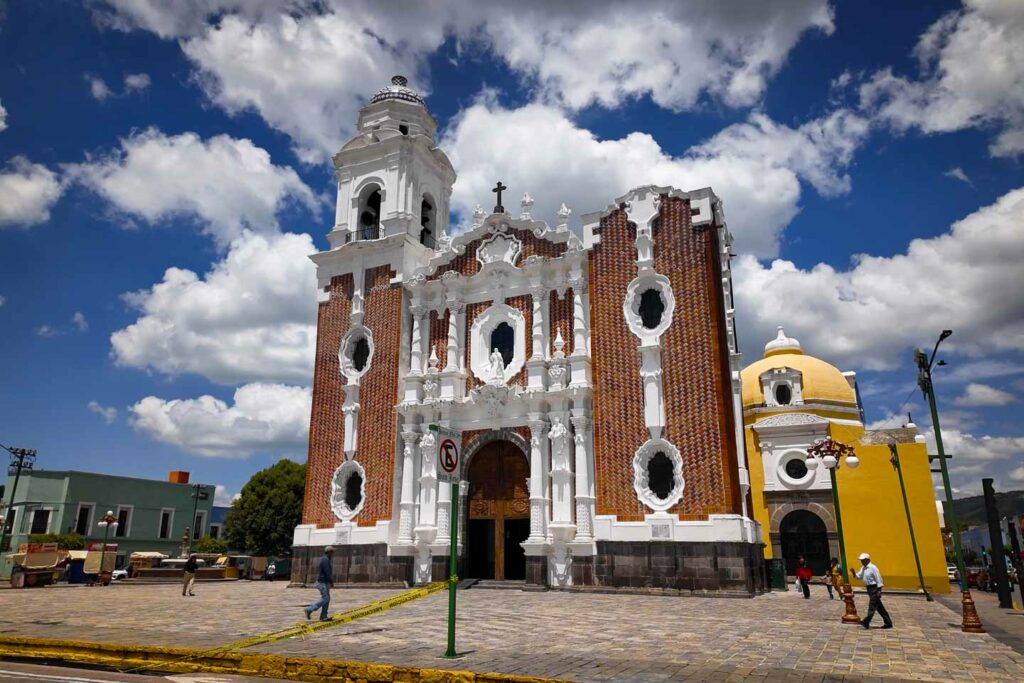
Catedral de Nuestra Señora de la Asunción
One of Mexico’s oldest churches stands right on the main plaza, built in the 1500s with stones taken from pre-Hispanic temples.
The wooden ceiling shows clear Moorish influence, carved by Indigenous craftsmen using techniques they brought from their own artistic traditions. It’s a beautiful example of how different cultures blended together in colonial Mexico.
Mass happens throughout the day, and visitors can enter between services to admire the architecture.
The church has a peaceful atmosphere that makes it a nice break from walking around the busy plaza. Don’t miss the side chapels, which contain some beautiful colonial-era artwork.
Tipping in Mexico
Ex Convento Franciscano de la Asunción
Walk just a few blocks from the plaza to find this massive monastery complex that Franciscan monks built in the 1530s.
The chapel holds the baptismal font where the first Indigenous nobles converted to Christianity, making it an important historical site for understanding how Spain changed Mexico.
Beautiful murals cover the cloister walls, and many show Indigenous and European artistic styles blending together in fascinating ways.
Museo Regional de Tlaxcala
This small museum sits inside a colonial mansion and tells Tlaxcala’s story from pre-Hispanic times to today.
The collection includes pottery, textiles and tools from local Indigenous groups, and everything has clear explanations in Spanish.
Santuario de la Virgen de Ocotlán
Take a short trip up the hill to visit this important pilgrimage site where twin towers rise above the city like beacons.
Inside, baroque decorations cover every surface and gold leaf shines from floor to ceiling. It’s incredibly ornate, even by Mexican church standards.
The Virgin of Ocotlán appeared to an Indigenous man in 1541, and millions of people visit her shrine every year.
.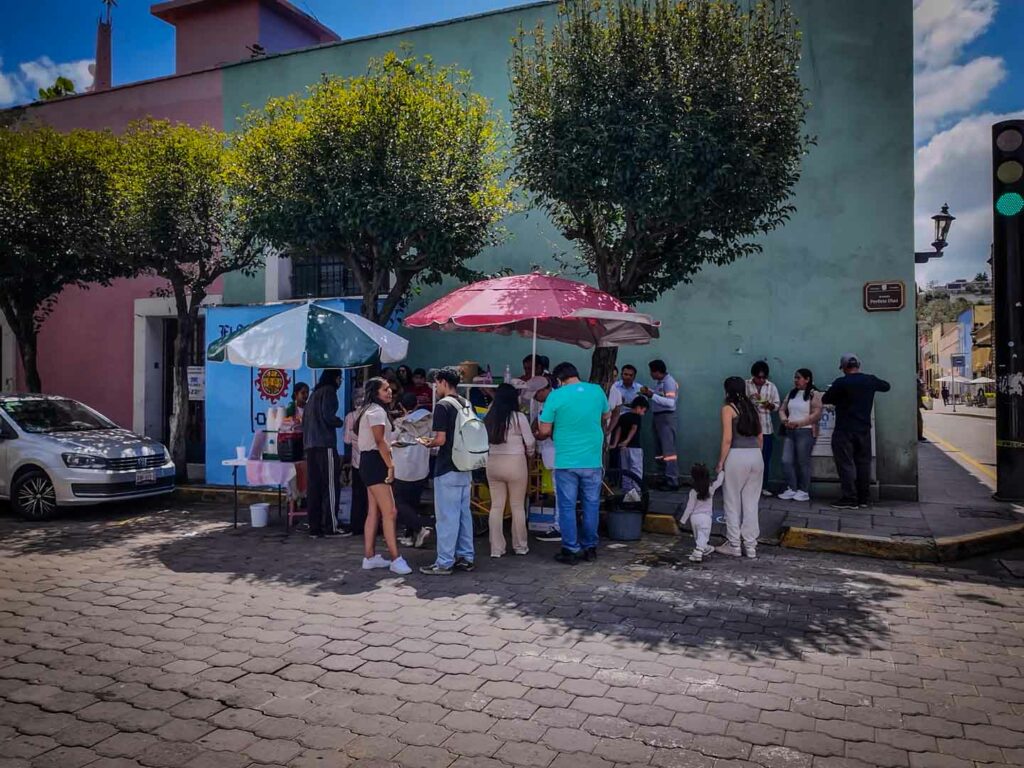
Getting to Tlaxcala from Puebla
Getting to Tlaxcala couldn’t be easier if you ask a local. I asked ChatGPT and it gave me horrible advice that a man shining shoes quickly corrected for me. So let me spare you the misdirection.
Catch a bus from Puebla’s CAPU terminal and head to the back left of the terminal for the Verdes bus on platform 83. They run every 20 minutes during peak hours, so you won’t be waiting around long.
They have a window ticket booth where you need to buy a bus card, but 1 card is good for multiple people. Staff added both our fares to one card (48 MXN each) and when we boarded the bus we just tapped the card.
The bus in comfortable but doesn’t have air conditioning, but windows are open and once you hit the road it cools down.
The ride there was under 45 minutes, it was a bit longer as we returned during rush hour.
The bus station in Tlaxcala is about a 10 minute walk downhill to the Zocalo and everything in the small city is very walkable.
Tlaxcala also has Uber if you get tired. And while they have colectivos (shared minibuses) to return to Puebla several locals told me not to take them because there are so many stops it would take hours.
